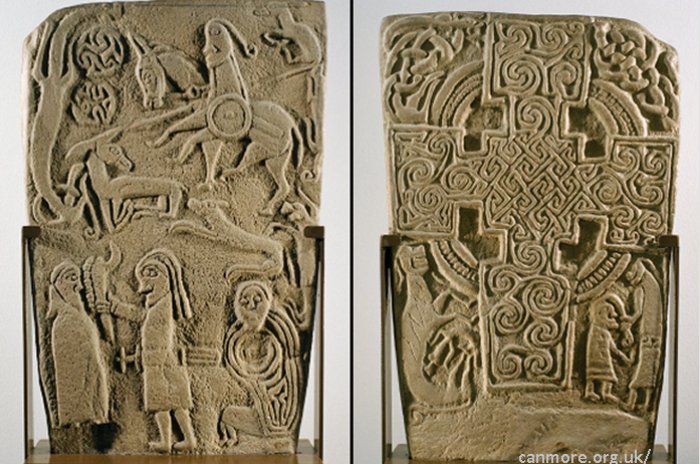Inchbrayock Stone: Pictish Samson Stone Carved With Biblical Symbols And Scenes
A. Sutherland - AncientPages.com - The Inchbrayock stone, also known as the Samson stone is a remarkable and truly fascinating ancient artifact.
Found in 1849, in the graveyard of St Braoch's Church, Inchbraoch, Montrose, Scotland the Pictish stone is carved with Biblical symbols and scenes. There are also several important Celtic symbols.
The stone combines Celtic and Christian beliefs. The Picts were an Iron Age society that existed in Scotland from ca AD 300–843. Not much is known about the mysterious Picts and yet, they played a vital role in the history of Scotland.
These brave and determined people repelled the conquests of both Romans and Angles and won one of the most important battles in Scottish history.
Other than a copy of the Picts’ King list, they left no written record of themselves. The Picts used mysterious symbols that still haven’t been properly deciphered and their enigmatic language is now extinct. The carved stones the Picts left behind are today known as ‘Pictish Symbol Stones’.
One of them is the Inchbrayock Stone. The reason why it is also called Samson stone is because the stone depicts the biblical character Samson, as well Delilah. The stone is carved on both sides. The front is carved in a Celtic cross with intertwined beasts at the top.
The carvings depict two confronting figures. One of them is tall with a beast’s head. The person appears to be yanking the overlong hair of the smaller figure. Some have interpreted it as scene showing Delilah cutting off Samsons hair.
Both figures are wearing tunics, that of the smaller figure with a decorative hem and that of the taller figure with a belt decorated with key pattern. There is also a crocodile-like creature with an elongated body and back leg entwined together and two interlaced serpents.
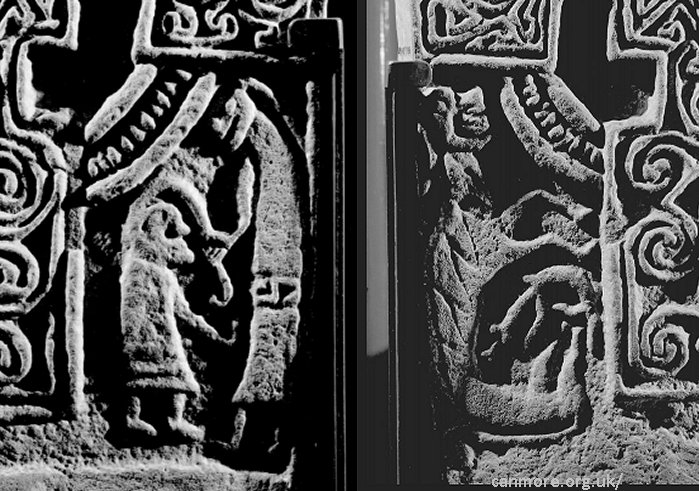
Pictish Carved Stone. The slab has a character of its own and many interesting details. It is carved in relief on both sides with the occasional use of incision. Evidence for discovery: found in 1849 in Inchbrayock graveyard and donated to Montrose Museum in 1859.. 'Image credit: Canmore
A large crocodile seen from above with bulbous eyes and two smaller crocodiles stretch along the right edge of the slab, one seen again from above with bulbous eyes and the other biting the tail of a donkey foal. There is another foal being harassed by a hound across the middle of the slab. Between the foals stands a man armed with spear, circular shield and sword, riding an adult donkey.
At the foot of the slab on the left is a cleric in a cowled cloak being menaced by a man wearing a tunic and sword, with a curiously wrought club raised in his right hand.
At the bottom there are two figure that have been interpreted as Mary and her child.
The Inchbrayock Stone is an excellent example of how the Picts used a variety of symbols to convey important messages. The stone was donated to Montrose Museum, Angus where is it currently kept.
To avoid confusion, it’s worth mentioning that there is another Samson Stone in Scotland. It goes by the name Samson’s Putting Stone. It’s a giant rock that stands on the summit of one of the eminences of Bochastle, a couple of miles west of Callander.
According to ancient legends, this huge stone was thrown here by one of the Fingalian giants in ancient times. It was originally located upon Ben Ledi, nearly 3 miles northwest, and was one of several stones being thrown in a competition to see who was the strongest of the giants and Samson was the name of the one who threw this huge rock.
Samson Putting Stone has nothing to do with the Picts. The stone was most likely carried from the Glen Dochart region and left there when the ice retreated at the end of the last ice age.

Spanning more than 1.7 meters and weighing more than a ton, the Dandaleith Stone has odd carvings made by the Picts who lived in the north and east of Scotland hundreds of years ago. Credits: Aberdeenshire Council
Over the years, archaeologists have uncovered several intriguing stone created by the Picts, especially in northern and eastern Scotland, but it has not been possible to decipher the symbols and signs. Carved stones represent a unique legacy of the Picts. Many of them give evidence of advanced skills of artists; some of the stones with very complex decorative motifs depict Christian crosses and crescent or birds or animals, both real and mythical.
One of the most extraordinary Pictish stones is the Dandaleith Stone. Spanning more than 1.7 meters and weighing more than a ton, the Dandaleith Stone contains several undeciphered signs.
Written by – A. Sutherland - AncientPages.com Senior Staff Writer
Copyright © AncientPages.com All rights reserved. This material may not be published, broadcast, rewritten or redistributed in whole or part without the express written permission of AncientPages.com
Expand for referencesMore From Ancient Pages
-
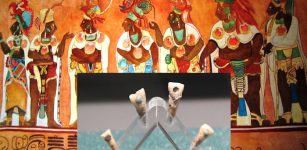 Ancient Maya Used An Unknown And Ingenious Method To Prevent Tooth Decay And Infections – Scientists Say
Archaeology | May 24, 2022
Ancient Maya Used An Unknown And Ingenious Method To Prevent Tooth Decay And Infections – Scientists Say
Archaeology | May 24, 2022 -
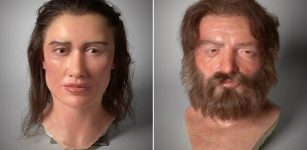 Facial Reconstruction Of Ancient Inhabitants Of Sagalassos Make Them Almost Real
Archaeology | May 31, 2019
Facial Reconstruction Of Ancient Inhabitants Of Sagalassos Make Them Almost Real
Archaeology | May 31, 2019 -
 Native Americans And European Legends Tell Peculiar Beings From The Sky Still Live On The Earth
Ancient Mysteries | May 16, 2018
Native Americans And European Legends Tell Peculiar Beings From The Sky Still Live On The Earth
Ancient Mysteries | May 16, 2018 -
 Were Mysterious Giant Ancient Mustatils In Saudi Arabia Used For Ritual Purposes?
Archaeology | Mar 16, 2023
Were Mysterious Giant Ancient Mustatils In Saudi Arabia Used For Ritual Purposes?
Archaeology | Mar 16, 2023 -
 Inscribed Fragments Of Stone Slabs Unearthed In Matariya, Ancient Heliopolis
Archaeology | Nov 9, 2018
Inscribed Fragments Of Stone Slabs Unearthed In Matariya, Ancient Heliopolis
Archaeology | Nov 9, 2018 -
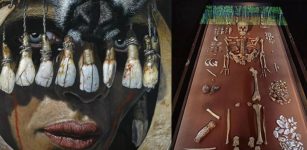 DNA Study Sheds New Light On The Mysterious 9,000-Year-Old Shaman Burial In Bad Dürrenberg
Archaeology | Nov 29, 2023
DNA Study Sheds New Light On The Mysterious 9,000-Year-Old Shaman Burial In Bad Dürrenberg
Archaeology | Nov 29, 2023 -
 Ancient Hindu High-Tech That Contributed To Modern Science
Civilizations | Nov 11, 2014
Ancient Hindu High-Tech That Contributed To Modern Science
Civilizations | Nov 11, 2014 -
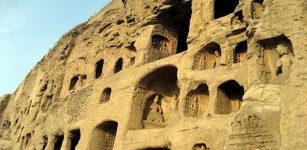 Yungang Grottoes: Marvellous Example Of Ancient Buddhist Rock-Cut Architecture
Featured Stories | Sep 15, 2015
Yungang Grottoes: Marvellous Example Of Ancient Buddhist Rock-Cut Architecture
Featured Stories | Sep 15, 2015 -
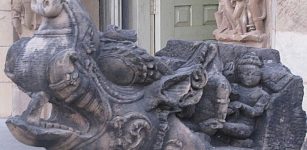 Makara – Legendary Sea-Creature With Many Incarnations In Hindu Mythology
Ancient Symbols | Feb 2, 2020
Makara – Legendary Sea-Creature With Many Incarnations In Hindu Mythology
Ancient Symbols | Feb 2, 2020 -
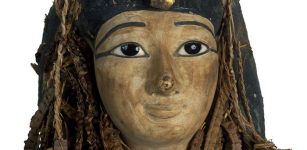 Mummy Of Pharaoh Amenhotep I Digitally Unwrapped For The First Time In 3,000 Years
Archaeology | Dec 30, 2021
Mummy Of Pharaoh Amenhotep I Digitally Unwrapped For The First Time In 3,000 Years
Archaeology | Dec 30, 2021 -
 An Expert Explains Why Tutankhamun’s Tomb Remains One Of The Greatest Archaeological Discoveries
Archaeology | Nov 2, 2022
An Expert Explains Why Tutankhamun’s Tomb Remains One Of The Greatest Archaeological Discoveries
Archaeology | Nov 2, 2022 -
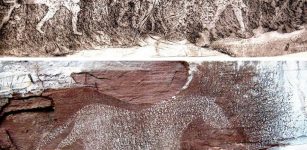 Sunduki – ‘Home Of The Gods’ – One Of The World’s Oldest Astronomical Observatories
Civilizations | Oct 4, 2015
Sunduki – ‘Home Of The Gods’ – One Of The World’s Oldest Astronomical Observatories
Civilizations | Oct 4, 2015 -
 Forbidden Underwater Discovery Could Re-Write Ancient History But The Investigation Was Stopped
Ancient Mysteries | Aug 27, 2019
Forbidden Underwater Discovery Could Re-Write Ancient History But The Investigation Was Stopped
Ancient Mysteries | Aug 27, 2019 -
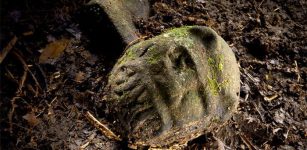 Explorers Of Lost City Of The Monkey God Contract Unusual Flesh-Eating Disease
Archaeology | Jan 22, 2017
Explorers Of Lost City Of The Monkey God Contract Unusual Flesh-Eating Disease
Archaeology | Jan 22, 2017 -
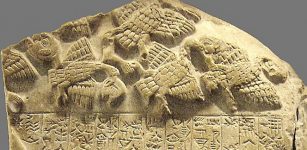 Sumerian Stele Of The Vultures: Oldest Known Historical Records Carved On Limestone
Featured Stories | Sep 1, 2016
Sumerian Stele Of The Vultures: Oldest Known Historical Records Carved On Limestone
Featured Stories | Sep 1, 2016 -
 Astrape And Bronte – Twin Goddesses Of Lightning And Thunder Carried God Zeus’ Thunderbolts
Featured Stories | Jan 22, 2019
Astrape And Bronte – Twin Goddesses Of Lightning And Thunder Carried God Zeus’ Thunderbolts
Featured Stories | Jan 22, 2019 -
 Unlocking The Secrets Of The Ancient Coastal Maya
Archaeology | Jul 8, 2022
Unlocking The Secrets Of The Ancient Coastal Maya
Archaeology | Jul 8, 2022 -
 Prehistoric Quarry, Stelida, Naxos: Early Human Moved Through Mediterranean Much Earlier
Archaeology | Oct 17, 2019
Prehistoric Quarry, Stelida, Naxos: Early Human Moved Through Mediterranean Much Earlier
Archaeology | Oct 17, 2019 -
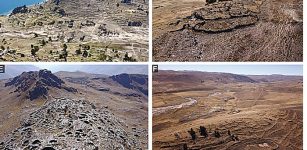 Pukaras: Fortified Impenetrable Hillforts In The Andean Highlands – A New Study
Places | Feb 7, 2024
Pukaras: Fortified Impenetrable Hillforts In The Andean Highlands – A New Study
Places | Feb 7, 2024 -
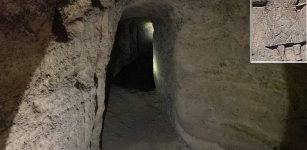 The 5,500-Year-Old Underground Rock Settlement With Illuminated Galleries In Ancient City Of Hadrianopolis, Turkey
Archaeology | Sep 18, 2023
The 5,500-Year-Old Underground Rock Settlement With Illuminated Galleries In Ancient City Of Hadrianopolis, Turkey
Archaeology | Sep 18, 2023

